With Liverpool seeing a number of their most exciting young players spend months out injured after breaking through, Dr Rajpal Brar explains why long-term layoffs are so common.
During Jurgen Klopp‘s tenure – and increasingly so in recent years – Liverpool have brought in a number of talented youngsters to develop for the medium and long-term while also helping reinforce the first team in the short-term as well.
Finding that balance between short, medium, and long-term can be a tricky tightrope to navigate, as you’re trying to not only mould and develop young players.
You’re oftentimes also dealing with ongoing and evolving variables in terms of physical development, mental development and introducing players to new levels of intensity, styles of play and overall demands as well (whether that’s on the pitch or off the pitch, with the microscope that comes with being a Liverpool footballer).
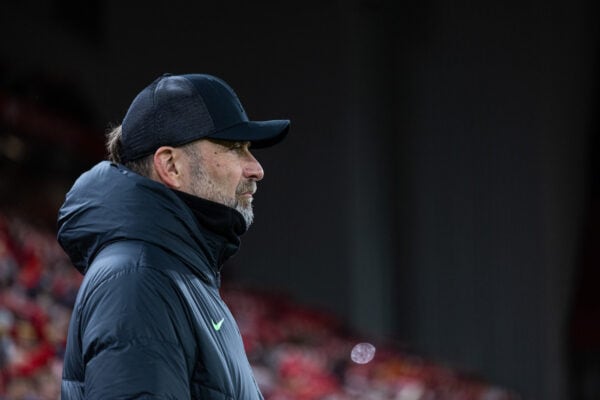
These major transitional periods for youth players are rarely a straight line, most often filled with good and bad – all part of the process of youth player development.
In Liverpool’s case, part of the bad has been long-term injuries to those youth players – including Stefan Bajcetic, Kaide Gordon, Conor Bradley, Ben Doak, Calvin Ramsay, and if we go a bit older, Curtis Jones.
Therein, the natural question becomes: why are the club’s younger players picking up so many injuries?
Causes of injury
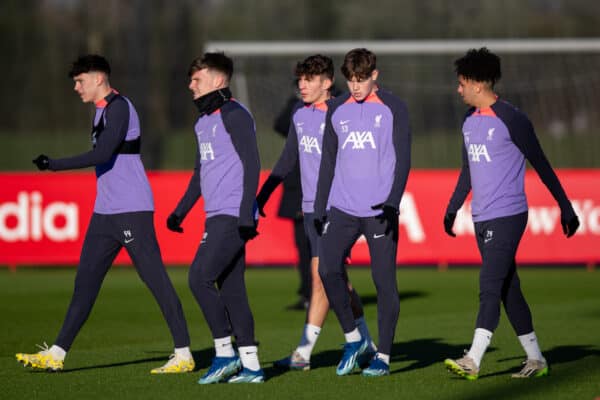
Before we go into player specifics, let’s touch on key general principles that I look for to unearth potential trends and yellow flags.
First and foremost, is the player potentially being overloaded? This could be represented by a jump in minutes, a jump in intensity (matches, types of matches, training, etc.), or a combination thereof.
Secondly, what type of injury is it? Is it contact or non-contact?
If the former, that’s unfortunately just part of football and the probabilities of high-level contact sports. If it’s the latter, it more often hints at other factors.
Lastly, is the injury one that is common in adolescent/younger players?
As I mentioned earlier, younger players have specific variables that are unique to them. Therefore, there are certain injuries that you tend to see more in these players compared to older, more physically matured and robust players.
With those three in mind, let’s get into the specific players.
Stefan Bajcetic
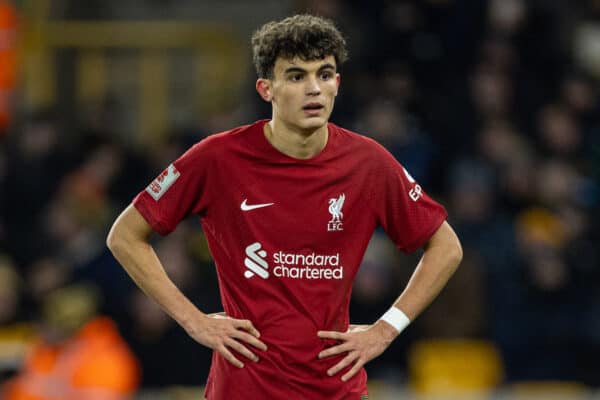
The first is Bajcetic.
Bajcetic was progressed from the youth team to the senior team relatively quickly, playing in a number of matches and minutes for the first team in rapid succession.
This jump in intensity (and remember, training with the first team is also higher intensity) is a recipe for overload.
Subsequently, he picked up an adductor injury that’s unclear in nature, as it could be muscular or it could be bone-related – he once mentioned a “stress response” which typically refers to the latter.
That would potentially indicate something like osteitis pubis (also known as sports hernia) which isn’t uncommon in developing players.
However, a key confounder here is that Bajcetic reportedly dealt with a similar injury before. Since previous injury is the most reliable indicator of future injury, this may not simply be an overload issue.
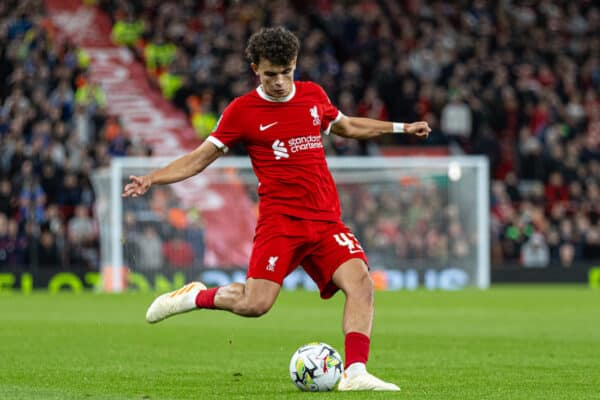
Upon returning from the adductor problem, Bajcetic picked up a calf injury and has remained out since.
This may seem alarming, but there’s always risk for other soft tissue injuries as a player returns from an extended absence and is still acclimating to game demands.
The club are now being very conservative with his rehab, and doubly so because calf injuries are very sensitive and prone to re-injury.
Kaide Gordon
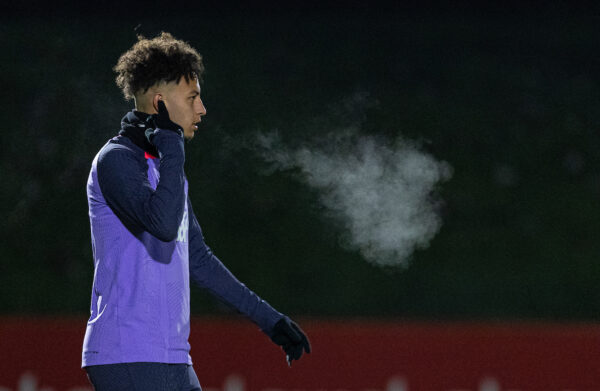
Moving onto Gordon.
Gordon also moved through the academy quickly, and had a jump in intensity due to training with the first team every day while also playing academy games and more sparingly in first-team games.
During this period, he picked up what was termed a “complex pelvic injury linked to his physical growth and maturation,” which kept him out for nearly 16 months.
His was another example of the club being very conservative with their rehab, due to the complexity of handling youngsters and the fluid variables that come with their physical development.
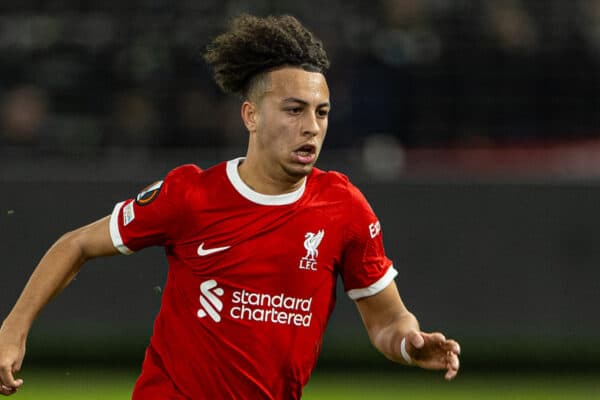
Upon returning, Gordon picked up a minor injury (inversion sprain of his ankle) but those are quite common in football.
Since then he has made the matchday squad six times, including his first start back against Union SG in the Europa League.
Overall, his situation sounds more so like the typical youngster dealing with development injuries situation compared to Bajcetic, who just played in a relative tonne of senior games.
Conor Bradley and Calvin Ramsay
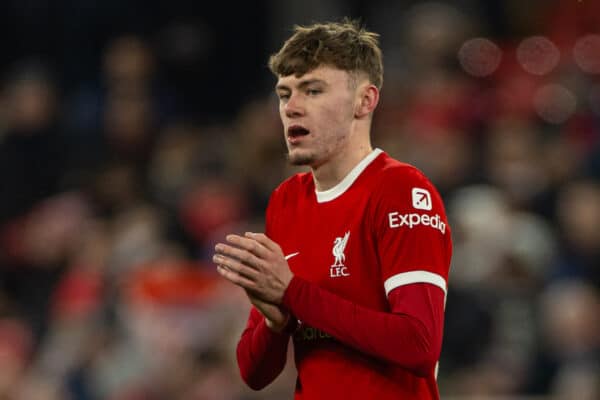
Onto two right-backs in Bradley and Ramsay.
Bradley’s case is perhaps the clearest of the bunch – overload caused by a heavy minutes burden (he played the most of any teenager in world football while on loan at Bolton in 2022/23) that led to an overload injury (vertebral stress reaction in his spine), which is quite common in teenage footballers.
Ramsay – similar to Bradley – had a heavy minutes burden (playing for Aberdeen in his case) and during his medical for Liverpool, multiple vertebral stress fractures were picked up.
As I mentioned before, that is a common overload injury for youth footballers due to the constant stress on the spine.
Upon returning, Ramsay then suffered a knee injury and then a subsequent setback which kept him out until November.
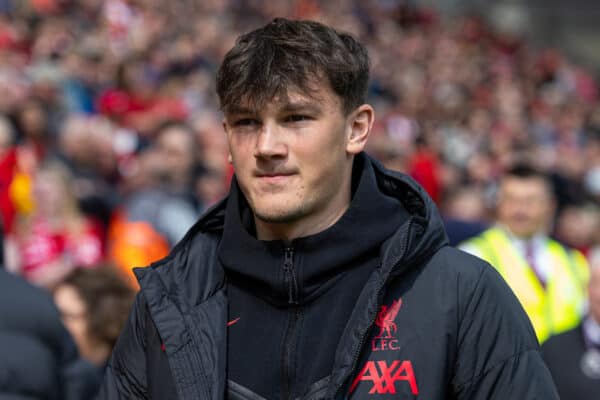
I’m unsure whether the original knee injury was contact-based or not but, as mentioned previously, it is not uncommon to see players pick up other injuries when returning from an extended absence.
To cap it all off, Ramsay recently missed games due to having COVID-19, which puts another dent in his fitness and rhythm.
Now recalled from his loan at Preston, he needs consistent matches and minutes to regain match fitness and reduce his injury risk.
Ben Doak
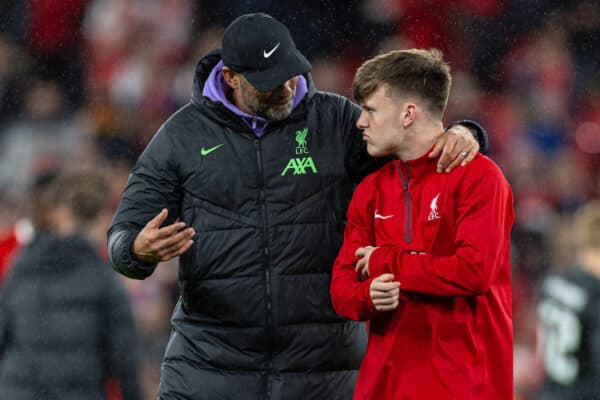
The next example is Doak who, after signing with the club from Celtic in 2022, saw a big jump in minutes playing for the U18s and U21s along with UEFA Youth League matches.
He began consistently training with the first team prior to this season and then featured in pre-season, earning the role that has seen him feature five times so far this campaign.
Following this jump in intensity, he picked up a muscular injury that kept him out about a month, and then a month later he suffered a lateral meniscus injury that would require surgery.

I’m not certain if this most recent injury is due to contact or overload but it will likely keep him out for an extended period of time.
Then he’ll face the same risks I’ve mentioned multiple times now for players returning from extended absences.
Curtis Jones
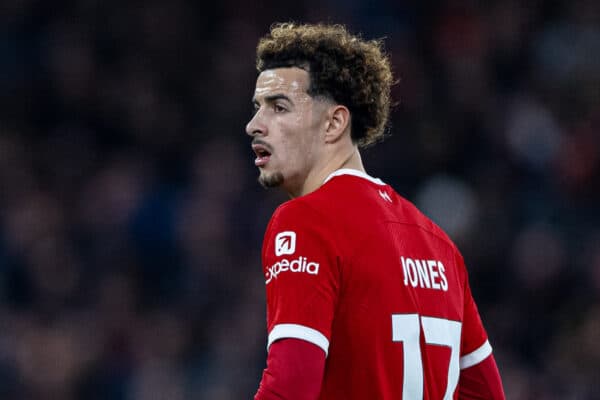
Last but not least is Jones, who doesn’t quite fit the pattern of the rest.
He had featured consistently for the first team, with consistent minutes for an extended period of time, prior to the foot stress reaction that kept him out for the majority of the first half of last season.
A stress reaction is due to overload, and perhaps Jones is just able to physically tolerate more demands than the other players mentioned.
The very good news is that the situation was managed quite well and looks to be very much in the rearview for Curtis, as he’s regaining and surpassing his previous form.
No reason to worry
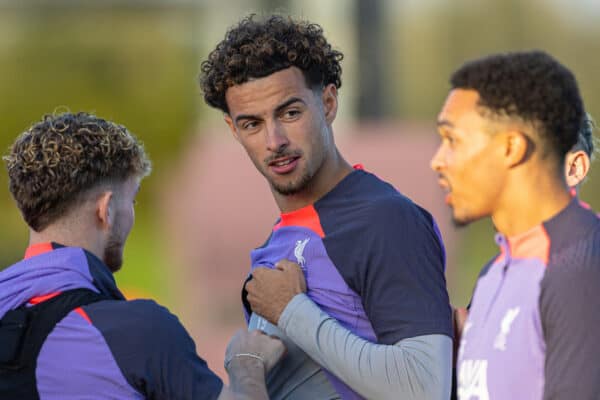
All in all, there are certainly some trends of overload, but that is part and parcel when introducing young players into the senior team.
Further, none of the injuries are uncommon ones for younger, developing players or players returning from extended absences.
Navigating youth player development and integrating them into the first team is not easy, by any means. It’s not simply a matter of minutes and intensity, but also factors specific to them.
As Klopp put it, when discussing Bajcetic in November:
“They’re still growing, these boys. They’re all different.
“We have other players with a different [skeletal growth], a different body, and OK that’s fine.
“With others it’s a bit too early, so we just have to put the brake on again and just wait until that’s all fine.
“Then Liverpool FC has a wonderful player, a wonderful player, to use. But there’s absolutely no time that we can put on that, and we will not, we just have to wait.”
Hopefully this goes without saying but none of this is to put any judgment on the Liverpool medical, physio and developmental staff.
Each are known to be some of the best in elite football, let alone the Premier League.
Regardless, hopefully this gave you some insight into youth player development and the current crop’s ongoing navigation of associated injuries.


